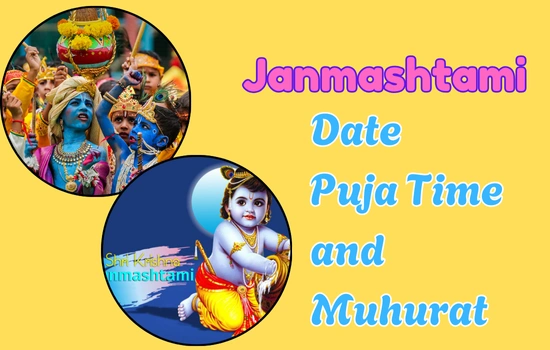Janmashtami, also known as Krishna Janmashtami or Gokulashtami, commemorates the birth of Lord Krishna, the eighth incarnation of Lord Vishnu. Celebrated with immense devotion across India and by Hindus worldwide, this festival signifies the victory of good over evil and the divine joy embodied by Lord Krishna. In 2025, Janmashtami falls on Saturday, August 16.
Significance of Janmashtami

Lord Krishna’s birth is celebrated as Janmashtami, symbolizing the arrival of the divine in human form to restore dharma (righteousness). His teachings, as encapsulated in the Bhagavad Gita, continue to inspire millions, emphasizing devotion, righteousness, and the pursuit of one’s duty.
Date and Puja Muhurat for Janmashtami 2025
The auspicious timings for Janmashtami in 2025 are as follows:
- Ashtami Tithi Begins: 11:49 PM on August 15, 2025
- Ashtami Tithi Ends: 9:34 PM on August 16, 2025
- Nishita Puja Time (Midnight Puja): 12:09 AM to 12:54 AM on August 16, 2025
- Duration: 45 minutes
- Parana Time (Breaking the Fast): After 5:50 AM on August 16, 2025
The Nishita Kaal, or midnight, is considered the most auspicious time for performing the Janmashtami puja, as it is believed that Lord Krishna was born during this period. Devotees observe a day-long fast, which is broken after the Nishita Puja and the birth of Lord Krishna.
Rituals and Celebrations
1. Fasting (Upavasa): Devotees observe a strict fast, refraining from food and sometimes even water, from sunrise on Janmashtami until the midnight puja, signifying devotion and self-discipline.
2. Puja Preparations: Altar Decoration: An idol or image of infant Krishna, often placed in a decorated cradle, is set up. The altar is adorned with flowers, lights, and traditional decorations.
Offerings (Bhog): Devotees prepare a variety of sweets and delicacies, including Lord Krishna’s favorites like Makhan Mishri (butter and sugar) and Panjiri, to offer during the puja.
3. Midnight Celebrations: Abhishekam (Ceremonial Bath): The idol of Lord Krishna is bathed with Panchamrit (a mixture of milk, curd, honey, ghee, and sugar) and water, symbolizing purification. Chanting and Bhajans: Devotees sing devotional songs and chant mantras like the Hare Krishna Mahamantra, creating a spiritually charged atmosphere. Aarti: The puja culminates with the aarti, waving of lit lamps before the deity, accompanied by singing and ringing of bells.
4. Dahi Handi: In regions like Maharashtra, the festival is marked by the Dahi Handi ceremony on the following day, where teams form human pyramids to break a pot filled with curd, emulating Lord Krishna’s playful nature.
Astrological Significance
Janmashtami is observed during the Ashtami Tithi of the Krishna Paksha (waning phase of the moon) in the month of Bhadrapada. The alignment of the moon under the Rohini Nakshatra during this period is considered highly auspicious, enhancing the spiritual benefits of the rituals performed.
Conclusion
Janmashtami is a profound celebration that transcends mere ritualistic observance, inviting devotees to immerse themselves in the divine love and teachings of Lord Krishna. By participating in the rituals during the specified muhurat, devotees seek to align themselves with cosmic energies, fostering spiritual growth and inner peace. As you prepare to celebrate Janmashtami on August 16, 2025, may the blessings of Lord Krishna fill your life with joy, prosperity, and the strength to uphold righteousness.
Note: The timings mentioned are based on Indian Standard Time (IST). For precise local timings, especially if residing outside India, it is advisable to consult a local Panchang or astrological source.

